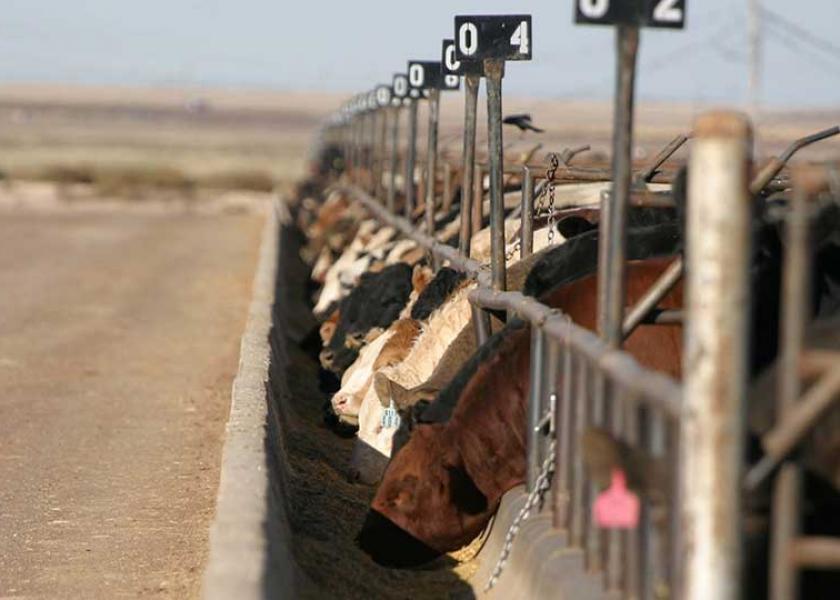Fed Cattle $1 Higher Ahead Of Neutral COF

Cash cattle markets continued to rally for a fourth consecutive week despite a late-week correction in futures prices. The highly anticipated cattle on feed report tamped down some of the most bearish supply ideas and was viewed as neutral for futures prices next week.
Cash fed cattle traded in the south at $116 per cwt., $1 higher than last week. Cattle traded in the north mostly at $116 per cwt., but the trade ranged from $115 to $117.50, with dressed trade $2 higher at $184.
USDA’s Nov. 1 cattle on feed report issued Friday counted 11.8 million head, 1% higher than last year. The trade’s most anticipated number was placements, which totaled 2.48 million, up 10% from the year-ago total. While placements were large, they were somewhat smaller than the trade estimated ahead of the report, leaving analysts to view the number as neutral.
Net placements of cattle were 2.42 million head. During October, placements of cattle and calves weighing less than 600 pounds were 600,000 head, 600-699 pounds were 540,000 head, 700-799 pounds were 517,000 head, 800-899 pounds were 475,000 head, 900-999 pounds were 230,000 head, and 1,000 pounds and greater were 115,000 head.
Marketings totaled 1.88 million head, down 1% from the previous year. Ahead of the report, feeder cattle futures were sharply lower, with losses of $2.75 to $3.325. Live cattle settled 65 cents to $1.925 lower.
Feeder cattle sold steady to $3 lower at auction, with weaned calves in good condition continuing to bring a premium to unweaned calves. AMS reporters said “Demand improved this week at most auctions in the Northern Plains as the farmer/feeder and summer yearling operators are in the buying mood. Very good demand for yearling feeder cattle as the supply is really tightening and when there are yearlings in town the market is very active. Buyers are putting calves out to graze on wheat fields and pastures after they get a brand and few vaccinations if they have any grazing while the others are headed to the feedlots.”
The Choice beef cutout closed $8.23 higher for the week at $232.57 per cwt. Select cutout was $3.01 lower at $211.32. The Choice/Select spread was $21.25. Cattle Slaughter under federal inspection was estimated at 662,000 for the week, 5,000 more than last week and 90,000 more than a year ago.
Related stories:
The Future of Certified And Verified Beef Products







